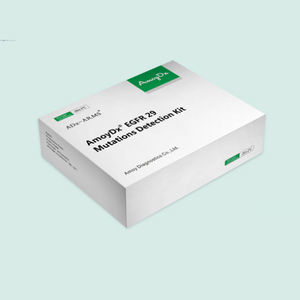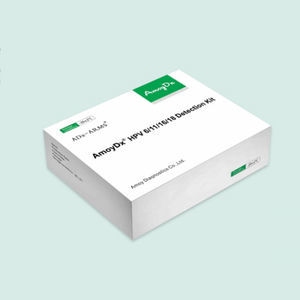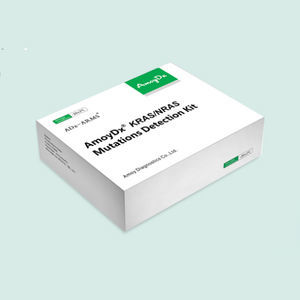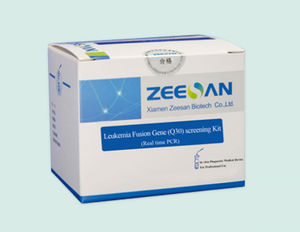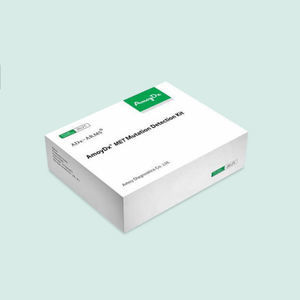
- Laboratory
- Laboratory medicine
- Colon cancer test kit
- LCM Genect srl
Colorectal cancer test kit LCMKN04apoptosisfor BRAF mutationsfor KRAS mutations
Add to favorites
Compare this product
Characteristics
- Applications
- colorectal cancer
- Application field
- apoptosis
- Tested parameter
- for BRAF mutations, for KRAS mutations, for NRAS mutations
- Sample type
- clinical, cell
Description
KRAS/NRAS/BRAF Mutations Detection Kit provides reagents to perform assays for 6 tests
Detection of 17 KRAS mutations (exons 2, 3 and 4), 13 NRAS mutations (exons 2, 3 and 4) and six BRAF V600 mutations (exon 15)
KRAS, NRAS and BRAF genes are the key molecules in the downstream signaling pathway of epidermal growth factor receptor (EGFR). These pathways control cell proliferation,differentiation and apoptosis.Frequency of KRAS, NRAS and BRAF mutations in colorectal cancer are36~40%, 1~6% and 8~15% respectively. Most frequent mutations occur in exons 2, 3 and 4 of RAS gene, and in codon 600 of BRAF gene.
KRAS mutations and NRAS mutations predict a lack of response to cetuximab (Erbitux®) and panitumumab (Vectibix®) therapy in colorectal cancer (CRC).[1]A number oflarge studies[2][3] have shown that cetuximab has significant efficacy in mCRCpatients with RAS wild-type tumors.And mutations in BRAF gene are a strong prognostic marker. Clinical data has shown that colorectal cancer patients with mutant BRAF gene are less likely to response to EGFR-TKIs therapy. NCCN Clinical Practice Guideline for colon cancer clearly indicates that all patients with metastatic colorectal cancer should be determined of tumor RAS (KRAS/NRAS) and BRAF genes status.
The KRAS/NRAS/BRAF Mutations Detection Kit is a real-time PCR test intended for qualitative detection of 17 KRAS mutations (exons 2, 3 and 4),13 NRAS mutations (exons 2, 3 and 4)and six BRAF V600 mutations (exon 15).
Intended Use
CE marked for IVD use in Europe.
Related Searches
- Assay kit
- Blood assay kit
- Molecular test kit
- Optical assay kit
- Clinical assay kit
- Fluorescence assay kit
- Real-time PCR test kit
- Oncology test kit
- Cell assay kit
- Genetic test kit
- Tissue detection kit
- Oncology test kit
- Nucleic acid assay kit
- Real-time detection kit
- DNA assay kit
- Genetic mutation detection kit
- HPV assay kit
- RNA assay kit
- Colorectal cancer test kit
- FFPE tissues assay kit
*Prices are pre-tax. They exclude delivery charges and customs duties and do not include additional charges for installation or activation options. Prices are indicative only and may vary by country, with changes to the cost of raw materials and exchange rates.


